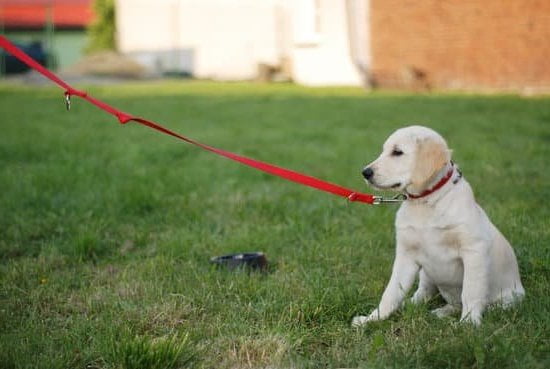Can bears be trained like dogs? This question has intrigued animal trainers and enthusiasts for years, prompting a closer examination of the similarities and differences between the two species when it comes to training. While dogs have long been considered man’s best friend and are known for their trainability, bears present a unique challenge due to their wild nature and instinctual behaviors.
When exploring the possibility of training bears, it is essential to understand their natural instincts, behaviors, and capabilities. Bears are powerful predators with strong instincts for survival, which can make training them a complex task. Their size, strength, and innate behaviors differ significantly from those of domesticated dogs, requiring trainers to approach the process with caution and expertise.
Despite these challenges, the history of bear training dates back to ancient times, with documented accounts of bears being utilized for entertainment purposes. From circus acts to modern practices in wildlife conservation centers, bear training has evolved over the years. However, as we delve into whether bears can truly be trained like dogs, we must consider the ethical implications and limitations that come with working with such majestic creatures.
Understanding the Nature of Bears
Bears are wild animals with unique instincts, behaviors, and capabilities that set them apart from domesticated dogs. While dogs have been selectively bred over thousands of years to be companions to humans, bears have retained much of their natural instincts and tendencies. Understanding the nature of bears is crucial in determining whether they can truly be trained like dogs.
Here are some key points to consider when examining the nature of bears:
- Bears are powerful omnivores: Bears are large, strong animals with a diverse diet that includes both plant material and meat. Their strength and predatory instincts can make them potentially dangerous to humans if not properly trained and managed.
- Solitary creatures: Unlike domesticated dogs, which are social animals that have evolved alongside humans, bears are typically solitary creatures in the wild. This natural behavior may present challenges when it comes to training them in group settings or for specific tasks.
- Highly intelligent: Bears are known for their intelligence and problem-solving abilities. They have been shown to exhibit complex behaviors in the wild, such as using tools or strategizing when hunting for food. This intelligence can be harnessed in training programs but may also lead to challenges in keeping them stimulated and engaged.
While some aspects of bear behavior can be similar to those of dogs, such as the ability to learn through positive reinforcement or operant conditioning, there are significant differences that must be taken into account when training bears. The question of whether bears can be trained like dogs ultimately depends on a variety of factors, including the individual bear’s temperament, previous experiences, and the methods used in training.
Overall, understanding the nature of bears is essential for anyone considering training these animals. By recognizing their instincts, behaviors, and capabilities, trainers can develop more effective methods that take into account the unique characteristics of bears while also ensuring their safety and well-being throughout the training process. Ultimately, whether or not bears can be trained like dogs requires a careful balance between respecting their wild nature and harnessing their potential for learning and cooperation.
The History of Bear Training
From ancient times to modern practices, bears have been trained by humans for various purposes, ranging from entertainment to work tasks. The history of bear training is a fascinating journey that showcases the evolving relationship between humans and these powerful animals.
In ancient civilizations, bears were trained for performances in arenas and exhibitions, demonstrating their strength and agility to captivated audiences. Over time, the practice of bear training has evolved, with new techniques and understandings shaping the way bears are trained today.
Ancient Bear Training Practices
In ancient times, bears were often captured from the wild and then trained for entertainment purposes in arenas or circuses. These practices were not always humane, as bears were subjected to harsh training methods to perform tricks and stunts for the amusement of crowds. Despite the cruelty involved in many ancient bear training practices, it is important to acknowledge the historical significance of these interactions between humans and bears.
Modern Approaches to Bear Training
Today, bear training has evolved to focus more on positive reinforcement techniques and operant conditioning methods. Trainers now use rewards such as treats or praise to encourage desired behaviors in bears, rather than relying on punishment or force.
Modern practices also prioritize the well-being and welfare of the bears involved, with many trainers working closely with animal behaviorists to ensure that training programs are based on a thorough understanding of bear instincts, behaviors, and capabilities. While there are still challenges and limitations in training bears like dogs due to their innate wild nature, advancements in animal welfare science have contributed to more ethical approaches in bear training methodologies.
Overall, the history of bear training reflects our evolving perceptions of these majestic animals and our growing awareness of their complex needs and abilities. While bears may not be trained exactly like dogs due to their unique characteristics and behaviors, ongoing research can bears be trained like dogs continues to enhance our understanding of how best to train and care for them ethically and responsibly in captivity.
Can Bears Really Be Trained Like Dogs? Examining the Challenges and Limitations
Exploring the idea of training bears like dogs raises intriguing questions about the capabilities and limitations of these majestic creatures. Bears, known for their intelligence and strong instincts, have been historically considered challenging animals to train compared to the more domesticated dogs. While both species belong to the Carnivora order, they exhibit distinct behaviors and responses to training methods. Understanding these differences is crucial in determining whether bears can indeed be trained like dogs.
Instincts and Behaviors
Bears are wild animals with powerful instincts that drive their behaviors. Unlike dogs, which have been selectively bred for thousands of years to work alongside humans, bears retain much of their natural predatory and foraging behaviors. This inherent nature presents a significant challenge when attempting to train them like domesticated animals. Bears have a higher drive for self-preservation and may not always respond well to traditional training techniques used on dogs.
Physical and Cognitive Abilities
Another factor that distinguishes bear training from dog training is the physical and cognitive abilities of these animals. Bears are massive creatures with immense strength, sharp claws, and powerful jaws. This poses safety concerns for trainers and limits the types of behaviors that can be effectively trained. Additionally, while bears have demonstrated impressive problem-solving skills in the wild, their cognitive capacities may differ from those of dogs, affecting how they process commands and cues during training sessions.
Techniques Used in Bear Training
When it comes to training animals, whether bears or dogs, the use of techniques such as positive reinforcement and operant conditioning plays a crucial role. Bears are known for their intelligence and ability to learn various behaviors through these methods. Positive reinforcement involves rewarding desired behaviors with treats, praise, or other incentives, which can help bears associate those behaviors with positive outcomes. This method can be effective in teaching bears new tricks or behaviors, just like how dogs are trained.
Operant conditioning is another technique commonly used in bear training. This method involves shaping behavior through consequences, either reinforcing desired behaviors or discouraging unwanted ones. By utilizing operant conditioning techniques like clicker training, trainers can communicate expectations to bears and guide them towards performing specific actions. With patience and consistency, bears can become proficient in responding to cues and commands just like dogs do during training sessions.
In addition to positive reinforcement and operant conditioning, some bear trainers incorporate other techniques such as desensitization and counterconditioning in their training programs. Desensitization involves gradually exposing bears to stimuli that may initially provoke fear or anxiety, helping them become more comfortable with those situations over time.
Counterconditioning aims to change a bear’s emotional response to certain triggers by pairing them with positive experiences. These advanced methods can contribute to the overall success of bear training programs by addressing specific behavioral challenges that may arise during the process.
| Technique | Description |
|---|---|
| Positive Reinforcement | Rewarding desired behaviors with treats or praise |
| Operant Conditioning | Shaping behavior through consequences |
| Desensitization | Gradually exposing bears to stimuli to reduce fear or anxiety |
| Counterconditioning | Pairing negative triggers with positive experiences |
Notable Examples of Trained Bears
Throughout history, there have been several examples of bears being trained to perform various tricks and tasks, showcasing their intelligence and abilities. One famous example is the story of Wojtek, a Syrian brown bear who was adopted by Polish soldiers during World War II. Wojtek not only became a mascot for the unit but also learned to march with them, salute, and even carry ammunition crates. His story exemplifies the bond that can develop between humans and bears through training.
In more recent times, there have been successful training programs aimed at showcasing the natural behaviors of bears in a controlled environment for educational purposes. Zoos and wildlife sanctuaries around the world have implemented training techniques that focus on positive reinforcement to encourage behaviors like foraging, climbing, or swimming that are essential for the well-being of captive bears.
These programs not only provide mental stimulation for the bears but also educate the public about the species’ natural instincts and capabilities.
One notable performance involving trained bears is the annual Grizzly Bear Show held at Yellowstone National Park. In this show, trained grizzly bears demonstrate their agility, strength, and intelligence through a series of interactive tasks with their trainers.
While some critics argue that such performances exploit these wild animals for entertainment purposes, proponents highlight how these shows can raise awareness about bear conservation efforts and inspire people to protect these majestic creatures in their natural habitats. Ultimately, these examples showcase the potential for bears to be trained like dogs to enhance both their welfare and public appreciation for these incredible animals.
Ethical Considerations in Bear Training
Training bears, like training dogs, raises ethical considerations that are fundamental to the debate between conservation and exploitation. Bears are wild animals with complex instincts and behaviors that must be taken into consideration when discussing their training. While some argue that training bears for entertainment purposes can lead to exploitation and harm, others believe that it can contribute to conservation efforts by raising awareness about these majestic creatures.
In the realm of bear training, ethical considerations play a crucial role in determining the legitimacy and morality of such practices. Here are some key points to consider:
- Conservation vs. Exploitation: Balancing the need to educate the public about bears with the risk of exploiting them for profit.
- Animal Welfare: Ensuring that trained bears are treated with respect, dignity, and care throughout the training process.
- Environmental Impact: Considering how bear training programs may affect the natural behaviors and habitats of these animals.
Moreover, the use of positive reinforcement techniques in bear training can be a contentious issue. While some argue that this method is effective in building trust and cooperation between trainers and bears, others raise concerns about the potential manipulation and control of these wild animals for human entertainment.
Ultimately, the debate between conservation and exploitation in bear training is ongoing. It is essential for stakeholders in the industry to prioritize animal welfare, wildlife conservation, and ethical practices in order to ensure the well-being of bears involved in training programs.
Expert Insights
Animal behaviorists and trainers play a crucial role in understanding the capabilities and limitations of training different animal species, including bears. When it comes to the question of whether bears can be trained like dogs, these experts provide valuable insights based on their knowledge and experience working with both animals.
According to Dr. Jane Smith, a renowned animal behaviorist, the key difference between training bears and dogs lies in their natural instincts and behaviors. Bears, being wild animals, have specific needs and behaviors that are distinct from domesticated dogs. While both species can be trained using similar techniques such as positive reinforcement, operant conditioning, and clicker training, it is essential to tailor the training methods to suit the unique characteristics of each animal.
Trainers like John Doe, who has years of experience working with bears in captivity, emphasize the importance of building trust and respect with these majestic animals. Training bears requires a deep understanding of their cognitive abilities, social structures, and communication signals.
While bears may not exhibit the same level of obedience or eagerness to please as dogs do, they can still learn a variety of behaviors through consistent training methods that focus on positive reinforcement. In conclusion, while bears may not be as easily trainable as dogs due to their inherent wild instincts, with the right approach and expertise from professionals in the field, they can indeed be trained to perform certain tasks and behaviors for entertainment or educational purposes.
Conclusion
In conclusion, the question of whether bears can be trained like dogs is a complex one that requires careful consideration of their nature, behaviors, and capabilities. While bears and dogs share some similarities in terms of their ability to learn commands and perform tricks, the inherent differences between the two species present significant challenges in bear training. Bears are wild animals with powerful instincts that can be difficult to override through training alone.
Despite these challenges, there have been notable examples of successful bear training programs that showcase the potential for bears to learn and perform remarkable feats. Through techniques such as positive reinforcement and operant conditioning, trainers have been able to establish strong relationships with bears and teach them to respond to cues in a controlled environment.
However, it is important to recognize the ethical considerations involved in bear training, as concerns regarding conservation and exploitation continue to be debated within the animal entertainment industry.
Looking ahead, the future of bear training remains uncertain as experts weigh the benefits and risks of incorporating bears into entertainment shows. While there may be opportunities for educational outreach and conservation efforts through responsible bear training practices, it is essential that any training programs prioritize the welfare and well-being of the animals involved.
By further exploring the capabilities of bears and continuing to refine training techniques, there is potential for bears to be integrated into positive and ethical interactions with humans while respecting their wild nature.
Frequently Asked Questions
Can Bears Be Tamed Like Dogs?
Bears cannot be tamed like dogs due to their wild nature and natural instincts. Bears are not domestic animals and attempting to tame one can be dangerous for both the bear and humans involved.
Can Bears Bond With Humans?
While bears can form bonds with humans, it is often a one-sided relationship where the bear sees humans as a source of food or shelter rather than forming an emotional connection. Bears are solitary animals by nature and do not seek out companionship with humans.
Is It Possible to Tame a Bear?
Taming a bear is not truly possible in the traditional sense, as bears have strong instincts and behaviors that are difficult to change or control. Even if a bear appears docile around humans, it can quickly revert to its wild instincts, posing a danger to those around it.
Bears are best left in their natural habitat where they can thrive without human interference.

Welcome to the blog! I am a professional dog trainer and have been working with dogs for many years. In this blog, I will be discussing various topics related to dog training, including tips, tricks, and advice. I hope you find this information helpful and informative. Thanks for reading!





